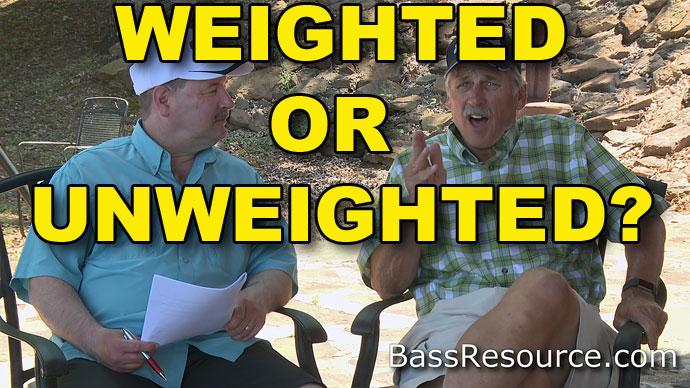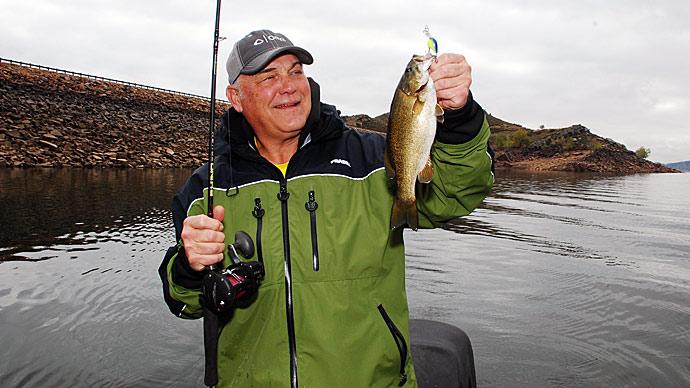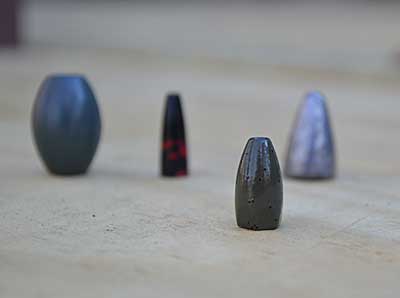
Getting your lure out or down to bass is fundamental to catching them. And in most situations for many decades, that was done with lead. While some anglers and manufacturers experimented with sinkers and lures, such as jig heads and spinnerbaits, incorporating other materials, lead has always been the No. 1 choice. But while easily moldable and inexpensive, it’s sinking from its top spot. There are several reasons, including a growing number of fishing regulations.
New Hampshire banned the use and sale of fishing sinkers and some jigs made with lead in 2000. It was the first state to make an effort to protect loons — the black and white diving birds whose haunting calls echo across northern waters — from fatal lead poisoning. They can ingest lost lead fishing items along with the small rocks from a lake or river bottom that they use to aid digestion or while grabbing a minnow rigged as bait.
Other states, including New York, Maine, and Vermont, have since followed New Hampshire’s example, prohibiting the sale or use of lead sinkers and some jigs. Environmental protection is a solid reason for choosing materials other than lead for fishing tackle. But these alternatives, including brass, steel, and composites, provide other benefits to bass anglers. And none of them offers more than tungsten, thanks mainly to its density.
Comparing the density of materials commonly used in fishing weights starts with measuring the mass of a specific volume. Tungsten’s density is 19.3 grams per cubic centimeter. That’s almost twice lead’s density — 11.3 grams per cubic centimeter. And it outdistances other materials commonly found in sinkers, including brass at 8.7 grams, steel at 7.9 grams, and tin at 7.3 grams.
Tungsten’s density packs a lot of punch. Tungsten sinkers have a smaller profile than those of the same weight but are made from any other materials. That helps finesse rigs retain a natural profile, for example, and lures wiggle through tight spots in thick cover.
Tungsten’s density also creates sensitivity. You’ll feel the slightest differences in bottom composition. That helps you locate hot spots that aren’t easily seen on your electronics. And that feeling is only magnified if your tungsten weight or jig is rigged on braided line.
While fishing tungsten weights and jigs will help you catch more and bigger bass, its price has proved too costly for many anglers. But that’s changing. Wallet-friendly options are hitting the market, allowing more anglers to incorporate tungsten in their presentations.
Here are five places where it pays to fish tungsten.
Punching matted grass
Big bass love to wallow in, around, and under aquatic vegetation, which provides plenty of cover and food. The matted variety is no exception. Bass in Florida, for example, head under it in winter when they find slightly warmer water, shade from which to ambush prey, and shelter from passing cold fronts. And across the northern reaches of the United States, many bass spend all summer under it, only leaving once the water temperature and level fall in autumn.
There are two approaches to fishing matted vegetation. The first is over the top with a soft-plastic toad or hollow-bodied frog. While these lures generate exciting, explosive strikes, their low strike-to-hook-up ratio often leads to frustrating days on the water. The other option is to go after them with a jig or Texas-rigged soft-plastic lure. Their single hook and shorter presentations mean success more often. But first, you must get your lure through the vegetation and into the open spaces where bass swim.
Punch rigs, for example, are popular means for penetrating matted vegetation. Most often outfitted with a short and stocky Texas-rigged soft-plastic craw or creature, all feature a bullet weight upwards of 2 ounces, many of which can be outfitted with a silicone skirt. Lead weights of that size appear gigantic when matched with those lures. Not only does your lure’s profile look and move less naturally, but the weight’s bulk can make presentations more difficult. Outfitting your rig with a tungsten sinker of similar weight solves both issues.
A tungsten bullet weight’s smaller size creates a more natural profile. That means more bass will bite instead of pausing to investigate when your lure comes crashing in from above. And secondly, you’ll have an easier time getting it through the matted grass, whether sliding through the smallest opening or lobbing it into the air so it can make it's own while crashing through. Both are good reasons to use tungsten jigs in matted vegetation, too.
Dragging football jigs
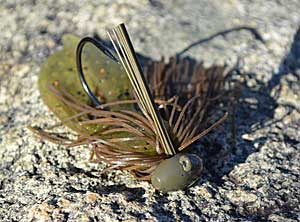
During summer’s heat or winter’s cold, bass congregate on stretches of rock in deep water. It could be a point, pile within a bed of aquatic vegetation, or channel ledge. These spots are usually out of range of the deepest diving crankbaits. But you can reach them with a football jig.
Sporting a silicone skirt and trailer or spider grub, football jigs are dragged across the bottom. Their shape, which mimics its namesake athletic device, does two things. It causes the jig to wobble, adding an attractive action. And it has an easier time sliding across crevices that regularly swallow traditionally shaped jig heads. That means dealing with fewer snags and lost lures.
Football jigs need to be heavy. That makes reaching deep depths easier and keeping them on the bottom. Tungsten’s density shines here, too, providing a compact head that preserves your lure’s profile. But it offers more.
Finding these hard-bottom spots can be done in several ways. You may know them from experience and see them on your electronics. But the best is by feel. Whether it’s the scratching of sand, quick taps of a mussel bed, or irregular sharp bangs of rock, a tungsten football jig does a better job of revealing what’s on the bottom than a lead one. And knowing exactly where these spots are can be the difference between fishing and catching.
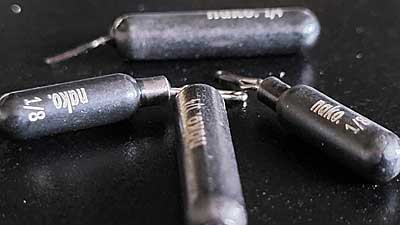
Don’t hesitate to swap your Carolina rig’s lead weight for a tungsten one. Its sensitivity brings the same benefits to the “ball and chain,” which also produces best around bottom changes — depth or composition.
Dropping drop shots
When it comes to chasing summer smallmouth, no other approach holds a candle to a drop shot in terms of popularity and productivity. They are easily fished in rivers, lakes, and reservoirs. And they fool plenty of largemouth and spotted bass, too.
Drop shots are a finesse presentation. Quiet and subtle, they generate bites from bass regardless of their mood. Compact tungsten weights, whether cylindrical, ball, or bell-shaped, add instead of distracting from a drop shot’s presence by making a smaller disruption along the bottom. Bass are curious by nature, so you want them concentrating on your lure instead of the clouds of silt that larger lead, steel, or brass sinkers kick up.
Don’t dismiss tungsten’s sensitivity in this situation. Smallmouth, like largemouth, cling to differences in bottom composition. It might be a patch of rocks on a sand flat or a bare spot within low-growing aquatic vegetation like eelgrass. Feeling that information will help you find those sweet spots and catch more bass.
Rigging worms Texas-style
Besides a spinnerbait, a Texas-rigged worm is the oldest and best-known lure in bass fishing. They continue to catch plenty of bass. But they catch even more when rigged with a tungsten weight.

Texas rigging makes worms snagless so that they can be fished with little worry through thick brush piles and beds of aquatic vegetation and around docks, wood, and other cover. Compact tungsten weights easily navigate cover, helping you reach more bass. They also better match the profile of worms, whether you’re fishing a 1/2-ounce weight and a 10-inch ribbon tail across a river ledge or a 1/16-ounce one and a 4-inch straight-tail in shallow water for pressured bass.
Tungsten weights are harder than lead, so in addition to increased sensitivity, they also make a distinct clicking sound when they hit cover. They make it more often when you rig a glass bead between your weight and lure. That attracts bass.
Adding nail weights
Not all plastic worms are rigged with a bullet weight out front. Plenty of finesse rigs built around slender worms have emerged over the past few years. And whether it’s a Neko or chicken, for example, most use inserted nail weights.
Lead nail weights, which get their name from the construction item of similar shape, have been around for decades. Tungsten versions are more recent creations, with some sporting barbs or ridges to help them stay inside worms. Like other tungsten weights, they are smaller than lead versions of the same weight. That means adding heavier ones to reach bass in deeper water or increasing casting accuracy on windy days without distorting the small worm’s finesse profile and subtle action that bass consider money.



